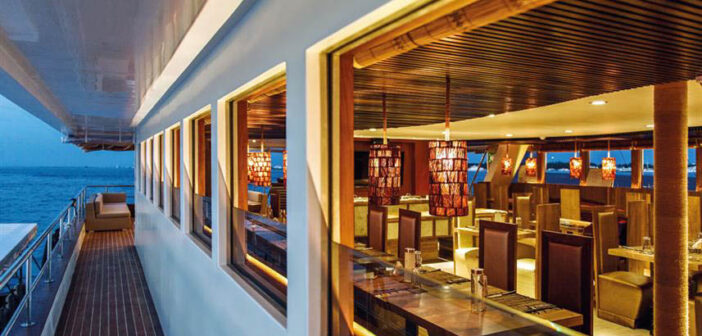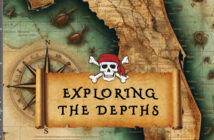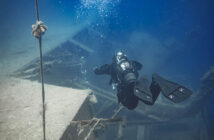On November 21st, 1944 the schooner Shag left St. John’s, Newfoundland, for Prince Edward Island on what turned out to be her last voyage. With Captain Gordon Harris at the helm she sailed for Georgetown, PEI, located on the island’s eastern side. In the fishing season the forty-five ton banking schooner carried ten men to the rich grounds off the southern Avalon Peninsula. Little vessels like Shag performed a dual role: transporting food and supplies to the towns in which they served. They went on the coastal run in the fall and winter, the off-season for fishing.
In November of 1944 her owner assigned Shag, under Captain Harris, to PEI. The long voyage, part of which included the rough and treacherous Gulf of St. Lawrence, proved to be quite a task for a small vessel over thirty years old.
Captain Gordon Harris kept a logbook and this, coupled with his memoirs, document the final days of the little vessel, a tragic end with her crew struggling for survival lashed to the mastheads for six hours and one man dying of exposure.
Shag was built in Placentia Bay in 1913 and was probably named for the seabird Atlantic Common Cormorant, often called Shag in Newfoundland.
She had a ten horsepower Acadia engine, plus her sails — foresail, mainsail, jib and jumbo — which were used when wind conditions were favorable; thus, she was an auxiliary/sail schooner.
On the coastal run vessels like Shag, with their hard working, experienced captains and crews, did yeomen work often under trying conditions. Voyages around the coast and across the treacherous Gulf of St. Lawrence to obtain potatoes and other produce were made in the off-season when fall storms and unforgiving seas were prevalent.
As required on any vessel, large or small, the captain kept a logbook, recording sailing information of wind, weather, position, and general conditions aboard ship. Captain Harris also recorded, perhaps years after the event, an account of his experiences on his voyages around the coast. Of the fall of 1944, he wrote:
“Arrived in St. John’s on the eighteenth, discharged, and sailed on November 21st for Georgetown, PEI.”
Harris had three crew with him: Michael Keating and William Lake of St. Joseph’s and Dominic Emberley. An experienced captain, Harris had taken his first command — the forty ton Ethie L owned by Warham’s business of Harbor Buffett, Placentia Bay — in 1939.
“We Sailed for PEI”The trip from St. John’s to Prince Edward Island was a sea voyage of approximately four hundred miles, about two weeks sailing in fair winds. For the first three or four days they made good progress. Shag and her crew passed the mouth of Placentia Bay and perhaps they looked longingly in that direction wishing they could be home with their families but knowing they had work to do first.
All went well until fifteen miles southwest of St. Pierre when they were accosted by a northwesterly storm. The little ten Acadia engine was useless in the gale and even the sails had to be reefed. For six hoursShag jogged in the heavy winds. One vicious gust ripped the foresail away.
With his crew on alert, Captain Harris ran his schooner under the jumbo sail before a seventy-mile gale! In the next several hours they drifted south and east into the Atlantic. All day October 26 Harris felt, as he wrote in his journal, they were “between life and death”.
On the evening of the twenty-seventh a destroyer came by and spoke through a trumpet or megaphone to the beleaguered crew. In 1944, to guard against the threat of German submarines, American and Canadian destroyers patrolled the ocean off America’s eastern seaboard. The destroyer’s captain saw the poor shape Shag was in, which by this time was wallowing in heavy seas, sails shredded and making very little headway. The captain asked them to abandon ship.
But these sailors were of a tough physical and mental fiber; Harris and his crew were not inclined to give up easily. As Captain Harris wrote:
“As the glass (barometer) showed that the storm was over and indicated a change of wind was to take place, I decided to stick with my schooner. I showed the signal for the destroyer to proceed on. I sounded and fixed my position as one hundred twenty miles southwest of Cape Race.
“On the following morning the wind had shifted its direction to the southwest and we shaped our course for Cape Pine (at the southwestern tip of Newfoundland’s Avalon Peninsula and the entrance to Trepassey Bay). On the morning of November first we sighted Cape Pine and harbored at River Head, St. Mary’s Bay.
“November third we had our sails repaired, took water and gas and sailed on 7th for Prince Edward Island again.”
For two days and nights as Shag passed Newfoundland’s south coast, there was no wind to fill her sails. With the engine running, Harris steamed along at three and a half miles an hour until he passed St. Paul’s Island located off Cape North, Cape Breton Island.
At this stage, the fickle wind was too light requiring extended use of the engine. When Shag was well out into the Gulf of St. Lawrence, gas had been exhausted and Harris ran up the foresail to finish the leg into Prince Edward Island. He observed:
“The wind veering from the southeast and snow. At 2 am we put a double reef mainsail and jumbo on to keep off the land. At 6 p.m. we lost the mainsail and jib.
“At 9 p.m. she struck Boughton Island Shoal two miles from the mainland of PEI. When she hit, the stern part from the cabin aft separated and (that section) went to the bottom.
“Taking the fall of the mainsail halyard, we tied the end on the dory. Myself and the cook went on the mainmast head (top) and the mate and the sailor went on the foremast head. There we spent six hours tied to the “spreaders”.
The dory was tied on and secure, but they knew they could not attempt to row to an unknown shore in darkness. Waiting for daylight and holding on to the rigging on the mast heads for six hours Captain Harris and his crew survived the cold November night. No help was in sight; no flare or signal had been raised to alert shore-men. Captain Harris describes what happened next:
“We owed our lives to the fact that the masts were made of Newfoundland spruce. With every wave that rolled over the vessel and her masts, they would bend over almost horizontal. As soon as the wave slackened the masts would snap upright again. Any hardwood would have broken off, but the spruce was tough and resilient.
“After Shag beat in solid on the shoal and became steady, we got the dory in to the mast and bailed the water. I cannot describe how, but we got ashore on PEI.
“That area, like much of PEI’s coast, is sand bars. In the heavy wave action, the little dory stranded time and again as the waves rolled back. We had to jump out and rush to hold or haul the boat to deeper water before the next wave swamped us.
“Hungry, wet and cold we set out to walk knowing that we had to find help soon. After walking 2 miles we saw lights. After that we came into the town of Boughton River, and the hospitality of these people is hard to describe. We found them as our own parents. With good food and a good night’s rest, three of us were okay, but our cook was in bad shape.”
Here Harris ends the account: his schooner wrecked, three of four crew in relatively good health. Tragically, the cook (whose name has not been recorded) lapsed into a coma from which he never recovered. Captain Harris and his two remaining crew were on Prince Edward Island for eleven days and went back to Placentia Bay on the motor vessel Gerald Ann. They arrived home on November 25.
Those who aided Harris and his crew as they stumbled into Broughton River have not been identified. The shipwrecked seamen saw the warmth and glow of kitchen lights in a home, knocked on the door and received the valued help they required.
Unfortunately names of the friendly family and the residents of Broughton River who assisted the shipwrecked mariners have not been recorded. However this story in “Mysteries of Canada” may bring them to light. Their story of rescue will help perpetuate the memory of the schooner Shag and an unforgettable voyage of four shipwrecked sailors in the fall of 1944.
This story is from Robert C. Parsons’ new book, “Committed to the Deep: Stories and Memoirs” Check out Robert’s personal web site for more information and stories at http://www.atlanticwrecks.com/
Learn more at: http://www.mysteriesofcanada.com/pei/lashed-masts-georgetown/










